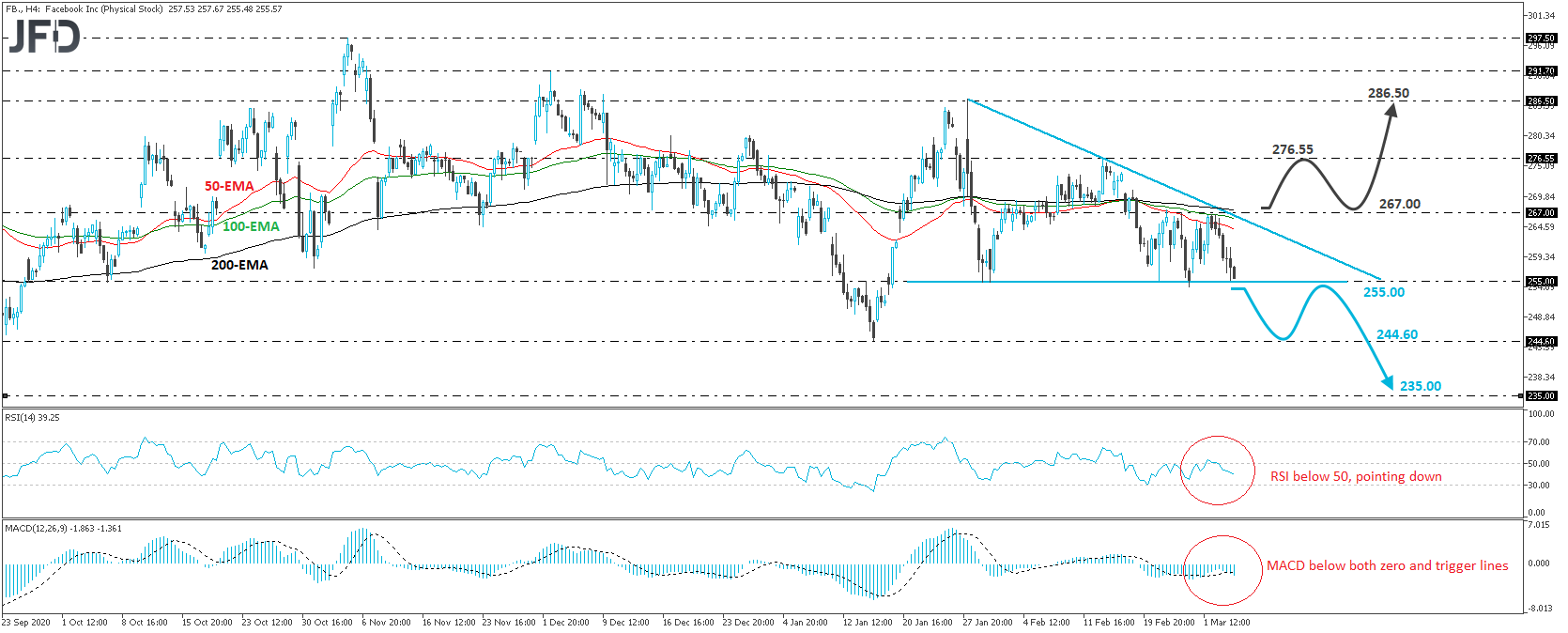Facebook (NASDAQ: NASDAQ:FB) traded lower on Tuesday and Wednesday, after it was rejected once again near the 267.00 zone, which has been acting as a ceiling since Feb. 23. Overall, the stock looks to be trading with a descending triangle since Jan. 19, and is now getting closer to the lower end of that pattern. Usually, such patterns tend to be bearish, but until we see the price exiting the formation, we prefer to take the sidelines.
A clear and decisive break below 255.00, which is the lower end of the triangle, will confirm a forthcoming lower low and may trigger declines towards the low of January 14th, at 244.60. The stock may rebound from there, but if investors are not strong enough to push it above the 255.00 mark, another slide may be possible. If we see a dip below 244.60 this time, market participants may allow extensions towards the 235.00 territory, marked as a support by the highs of July 28 and 30.
Shifting attention to our short-term oscillators, we see that the RSI lies below 50 and points down, while the MACD runs below both its zero and trigger lines, pointing south as well. Both indicators detect downside speed, but as we already noted, we prefer to wait for a dip below 255.00 before we get confident on larger declines.
On the upside, a break above the upper end of the triangle and the key resistance zone of 267.00 may signal that investors have found interest in this stock again. They could lead it towards the 276.55 hurdle, marked by the high of Feb.16, the break of which may see scope for extensions towards the peak of Jan. 28, at 286.50.
Which stock should you buy in your very next trade?
With valuations skyrocketing in 2024, many investors are uneasy putting more money into stocks. Unsure where to invest next? Get access to our proven portfolios and discover high-potential opportunities.
In 2024 alone, ProPicks AI identified 2 stocks that surged over 150%, 4 additional stocks that leaped over 30%, and 3 more that climbed over 25%. That's an impressive track record.
With portfolios tailored for Dow stocks, S&P stocks, Tech stocks, and Mid Cap stocks, you can explore various wealth-building strategies.

